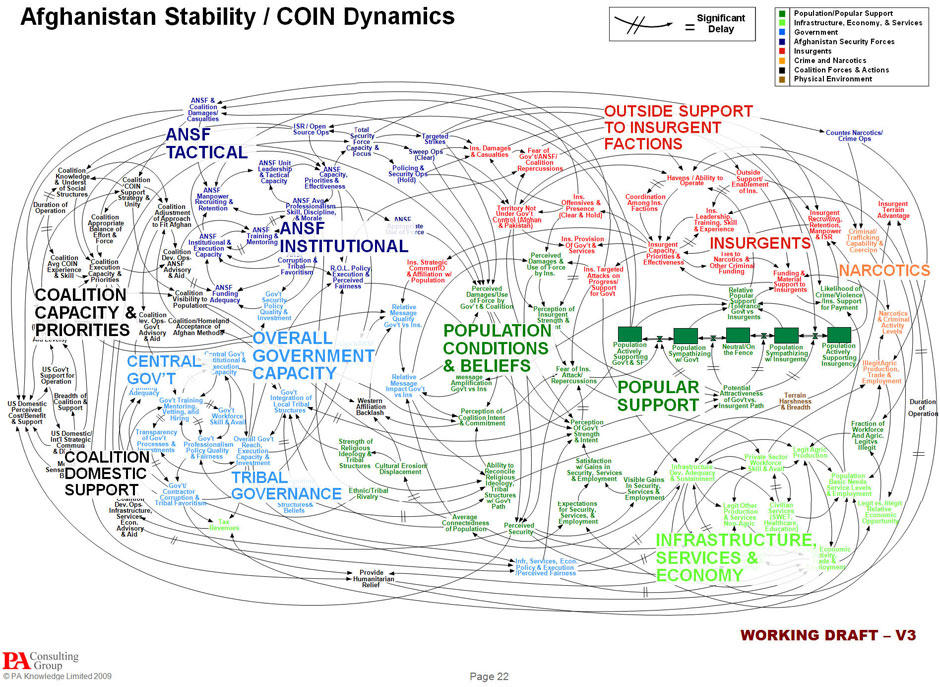 |
| Candyland: War College Edition |
Last week, Wired's Dangerroom Blog wrote about a Army Colonel who was relieved of duty in Iraq after writing a generally unflattering article about the US military's use--or rather, mis-use--of PowerPoint. The Colonel laments, "endless tinkering with PowerPoint slides to conform with the idiosyncrasies of cognitively challenged generals in order to spoon-feed them information.” He was relieved less than 48 hours after the article hit UPI, a newswire service.
While I can't quite figure out why the colonel would choose to release this over a wire service rather than a blog or some other, less 'commercial' forum--as Wired points out, the Army (and the military in general) has been generally hands off soldier's blogs and online postings--I agree with his general conclusion. The military has developed a PowerPoint habit to the point of inanity. Rather than using it as a tool to convey information in a visual form, it has become the sole, de facto medium of communication from the Grunts on the ground and deckplate Sailors up to the general officer and Pentagon command structure.
As a student interest in the rhetorical and functional implications of various forms of electronic media, the drawbacks of relying solely on PowerPoint are obvious. Take, for example, the infamous PowerPoint slide at the top of this post. The New York Times and others have reported on the military's reliance-to-a-fault on PowerPoint and have used this leviathan slide to illustrate their point. To the credit of the flag-level Officers who view these everyday, it's obvious that they know that all nuance and many important details are stripped from the information by the data gets delivered to them in slide form, yet this does not prevent this from the being the day-to-day status quo of decision making strategists.
Two issues:
1. From my level, I am usually directed to format a slide(s) in a particular way that I know is less effective than another method I have either learned or studied. There are certain formats ("stop-lights," "quadrant-slides," etc.) that I continuously produce or see being produced that are just not the most effective way to convey information to the "chain-of-command," but this is what the CoC demands--or implies that it demands. The reliance on these slides likely derives from the lowest common denominator of PowerPoint users. Most military users suck at PowerPoint, do all or most of the PowerPoint sins, and this ineffective use has evolved into an equally ineffective culture of information flow.
I believe that it is absolutely essential to fix the culture of ineffective info flow.
2. Returning to the slide that starts this post, the slide itself is essentially accurate. But, if the "medium is the message," then it's the medium that muddles the usefulness of what is presented here. The question I'm am very much concerned with is the same one The Guardian poses: How can it be done better? Can it be done better with PowerPoint or any other tool for that matter? The Guardian posed it as an open-ended question, and seems to have received anything in the comments section of any real substance.
So, professional writers, there's our gauntlet. America needs our help.
No comments:
Post a Comment